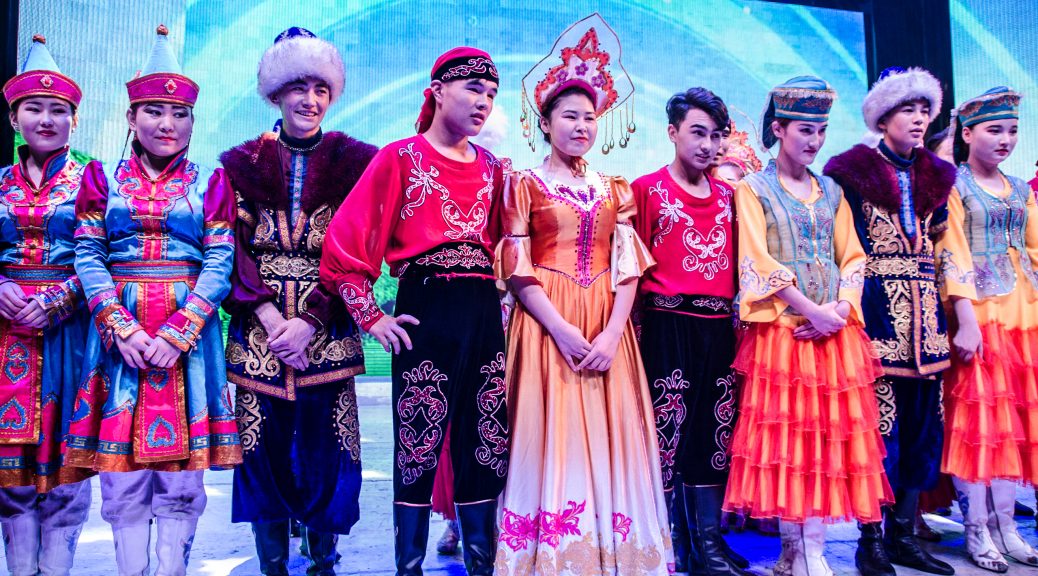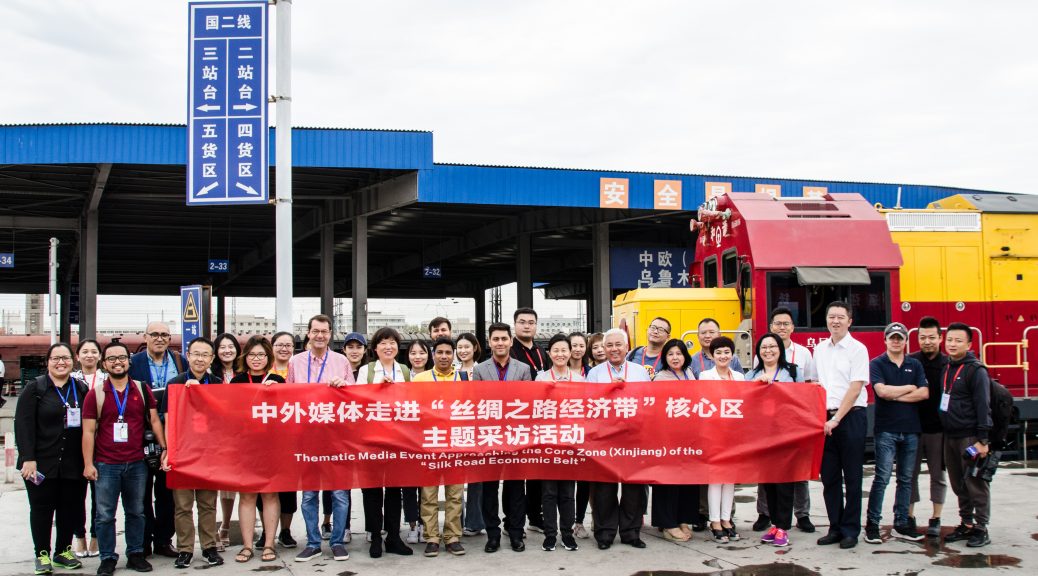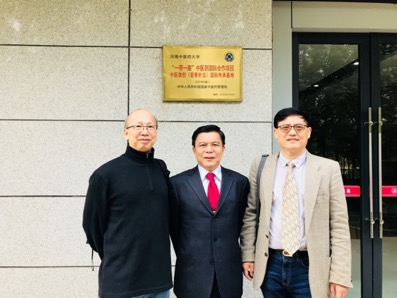STOCKHOLM, 23 oktober (Greenpost) – På eftermiddagen den 27 augusti gick journalisterna till Gaubau Kender bas i Burqin County i Altay-regionen med intervjupersonen i Silk Road Economic Belt i Altay-området.
På vägen, genom fönstret, kan folk se många av affischerna till generalsekreterare Xi Jinping och olika etniska minoriteter. Bildtexten är att Xijinping och Xinjiang människor är hand i hand och hjärtat av hjärtan.
När bussen körde till fruängen i Gebao såg ett vackert landskap framför reportern. Här är den oändliga tillväxtbasen av Gebao. På en rad planteras en stam Ge Bao enligt forskarnas vägledning och enligt en viss växtavstånd och linjeavstånd
Vad är Ge Bao Apocynum Venetum? Det är underförstått att Gebao kenaf är en ny variant av Apocynum venetum. Apocynum venetum var den sena jordbruksekonomen Dong Zhengjun som genomförde en jordbruksforskning i Luobu Plain i Xinjiang sommaren 1952.
Det visade sig att den lokala vildhampen växte särskilt kraftigt och fiberkvaliteten var särskilt utmärkt. Samtidigt med tanke på det faktum att det kinesiska folks mat och kläder ännu inte har lösts, under den sociala bakgrunden och de materiella förhållandena vid den tiden, genomfördes oleanderens röda och vita vilda hampa i alla delar av landet kallas apocynum, vilket bidrar till industrialiseringen av främjande och avveckling av bomullsgrödor och förvärv av växter. Fiberbehoven kan spela en betydande roll, det här är den ursprungliga avsikt Apocynum namnges av Mr. Dong Zhengjun.
Men, tyvärr, på grund av mänsklig förstöring, klimatförstöring och andra orsaker, har Apocynum venetum inte artificiellt planterats i enlighet med Dong Zhengjuns önskningar och drabbats av ett stort antal arsenikodlingar. Större framgång och oordnad utveckling resulterade i att kenaf var på gränsen till utrotning.
Luobu eller Rob kenaf, i Tangdynastin “Ny granskning av gräset” och Mingdynastin “Frälsning av gräset” boken kallad “Ze Paint”, kallade de moderna “kinesiska högre plantorna” teblomman. År 1977 inleddes Rob Kenaf och Robb White officiellt i “Chinese Flora” och Apocynum venetum Linn (Apocynum venetum Linn) betecknades som Apocynum venetum L. Samma år registrerades Rob Kenaf i Folkrepubliken Kina, och den totala flavonoiden av de ikoniska ingredienserna var 0,6%. Gebao röd hampa är en skatt, hampfrön kan göras till te, stjälkar och löv kan tillverkas i fiber och bli material av underkläder. Det kan också göra Gobi grön.
Från 123 mu(8.2 hektar) till 30 000mu(2000 hektar)
Ursprungligen bestämde Liu Qitang (Liu Ban Ge), ordföranden för Huatian Textile Fashion (Hong Kong) Co., Ltd. att bli knuten till Apocynum yepa för att förverkliga sitt drömda liv. Sedan 2002 har forskargruppen, tillsammans med Kinas berömda experter på vilda växter, gräsmark ekologi, fjärranalysmätning, kinesisk medicin kemi och andra områden relaterade till Apocynum venetum, varit i Yellow River Basin, Hexi Corridor, Qaidam, Tarim reserver och värden av 29 apocynum historiska distributionsområden som Zhun Geer undersöktes och utvärderades upprepade gånger.
Det visade sig att det ligger 87 grader i altitud, 47 grader nordlig latitud, och den nordligaste delen av världen ligger längst bort från kusten. Altays Alahaq East Gobi har fortfarande 123 mu apocynum. På grund av den speciella temperaturskillnaden, vind och ljus, värme och vatten, producerar växten mer aktiva ingredienser som är relaterade till stressmotstånd och skiljer sig från morfologin från apocynum som växer på andra områden, vilket har uppmärksammat auktoritativa experter.
Enligt nationella behörighetsbyrån var det genomsnittliga effektiva mässingsinnehållet i anläggningen 2,38%. Det undersöktes av Xiao Zhengchun, chef för det tidigare kinesiska apocynum forskningscentret, och Zhang Weiming, en forskare vid Nanjing Wild Plant Comprehensive Utilization Research Institute och den internationellt berömda växt taxonomin Professor Li Bingtao. De alla välkomnade denna växt som “Gobi Skatt” och hette det Altay Gebao Apocynum Venetum Red.
För att spara Gebao kenaf, sedan 2007, har Gebao Company artificiellt planterat 26 000 mu(1800 hektar) av Gebao kenaf i över 10 år, vilket står för 90% av den totala mängden kinesiska kenaf. Under 2012 genomförde Beijing Skog Universitet en ekologisk miljöbedömning. Resultaten visade att samhället var mycket fyrdubblade, vegetationskolagret ökade med 4 gånger, jordmikrobiell biomassa ökade med 76% och effektiviteten i vatten ökade med 60%. Jordens erosionsmodul reduceras med 80%. Planteringen av Gebao kenaf kan kraftigt förbättra Gobi-ökens förmåga att förhindra vind och sand. Äntligen kan Gebao-plantans toppfrukt vara berusad som te. Jag såg många havtorn i det allmänna berget. Seabuckthorn träd kan sägas vara ett slags grönt träd som växer mot dricka. Gebao kenaf är ett bra sätt att förvandla Gobi-öknen till gräsmark.
Under 2012, för att rädda den ekologiska miljön vid sjön Aibi, baserat på det framgångsrika genomförandet av räddningsprojektet av Gebao kenaf i Altay, ökenbyte-oasprojektet, med inbjudan från Jinghe County People’s Government, Aibi Lake Wetland National Nature Reserve Administration, genomförde Gebao Group gemensamt den första fasen av Aibi Lake-projektet och planterade 100 000 mu (9999 hektar) av Gebao-växter.
Efter 10 år av biomimetisk plantering, var området rankat som 3A turistattraktion av Altay Gebao hav av blommor i Xinjiang, som grundades på Gebao kenaf ekoindustrin, med Gebao kenaf te för att förbättra sömnen och integrera kinesisk medicin för att upprätthålla hälsa. Folklore show, fritid semester, sightseeing tour, vetenskap erfarenhet samlas alla i en miljö turism cirkel.
Stå på GI-tornet med 123 steg för att spara pärlor och stenar, du kan känna sin entusiasm för att välkomna besökare från hela världen.
Enligt rapporter har Gebao kenaf-projektet stor praktisk betydelse. Först och främst är det ett framgångsrikt fall för att förhindra ökenspridning. Här är det perfekta att göra Gobi till en oas. Bland annat investerade Gebao Company mycket pengar, arbetskraft och materialresurser. Samtidigt deltog många forskare och akademiker i det, och genom vetenskaplig forskning blev Gobi en oas och utvidgade sjöområdet. För det andra är Gebao kenaf också en slags traditionell kinesisk medicin. Det sägs att Gebao kenaf hälsovårdsprodukter kan förbättra människors hälsa.
Enligt Kina Center for Disease Control har Kina mer än 300 miljoner patienter, och mer än 200 miljoner människor har hjärt-kärlsjukdomar och cerebrovaskulära sjukdomar. I genomsnitt dör en person av kardiovaskulära och cerebrovaskulära sjukdomar var 30: e sekund, och en tredjedel av friska människor har sömnhinder, vilket resulterar i en sub-sund population så hög som 76%. Gebao kenaf kan vara en naturlig hälsokost för personer med högt blodtryck, högt blodfett och sömnstörningar.
Liu Qitangs dotter Liu Xiaoyu berättade för reportrar att detta projekt var hans pappas hårda arbete. Efter många års lång sökning hittade han äntligen Rob Kenaf. Sedan genomförde de storskalig konstgjord plantering av Rob kenaf och realiserade 30 000mu (2000 hektar) grönt gräsmark. De planerar också att plantera 50 000 mu (3333hektar) och förvandla Gobi-öknen till en oas. Den närliggande vattennivån i närheten brukade minska.
Men efter mer än 10 år av sanering och grönning har ytan av sjön expanderat. Det kan ses att artificiell plantering kan uppnå miljöförbättringar. Samtidigt kan Gebao kenaf utveckla avledda industrier samtidigt som man kontrollerar ökenspridning och skapa en demonstration för omvandling av lokalt traditionellt jordbruk och djurhållning. Det har direkt ökat inkomsterna från bönder och herdsmen och förbättrat sin kulturella kvalitet, uppnått hållbar ekonomisk utveckling. Konstruktionen av ekologisk civilisation är en nationell strategi, och Gebao kenaf-projektet återspeglar verkligen begreppet grönt berg är också det gyllene berget. Gebao kenaf produkter inkluderar mat, te, hälsa underkläder, strumpor, hattar och andra kläder produkter.
 President Hu Jintao och Xi Jinping lyssnade på introduktionen av det ekologiska restaureringsprojektet av Xinjiang Altay Gebao kenaf respektive 2010 och 2012.
President Hu Jintao och Xi Jinping lyssnade på introduktionen av det ekologiska restaureringsprojektet av Xinjiang Altay Gebao kenaf respektive 2010 och 2012.
Under 2012 gav FN: s fredsambassadör, den internationella pianostjärnan Lang Lang och Gebao Group, VD Liu Qitang, baserat på det gemensamma miljöskyddskonceptet, det officiella namnet på Langlang Shenzhen Concert Hall som “Langlang Gebao Concert Hall”. Lang Lang och Ge Bao har gjort en olöslig obligation i projektet för att gynna landet och världens folk. För att stärka stödet till projektet bidrar Lang Lang, som alltid har varit oroad över miljöskydd, att bidra till att främja Gebao kenaf. Gebao varumärkesannonser kan ses på både Altay och Kanas flygplatser. Naturligtvis ger kommunen också stort stöd till detta projekt. De tror att detta inte bara förbättrar miljön utan också ökar inkomsterna hos bönder och herdar, så det är en bra sak till förmån för landet och folket.
De utländska medier som deltar i denna intervju inkluderar NHK från Japan, Green Post of Sweden, Echo News of Belgium, Tolo News of Afghanistan, Gikabar National News Agency i Kirgizistan, media i Bangladesh, NET TV i Indonesien och Indien, Egypten, Pakistan, Malaysia , Turkiet och Uzbekistan journalister. De är journalister från länder längs Silk Road Economic Belt och kommer att utforska mysterierna kring kärnområdet i Sidenväg Ekonomiska Bältets Kärnområdet–Xinjiang.
Foto och Text Xuefei Chen Axelsson

































































































































































































